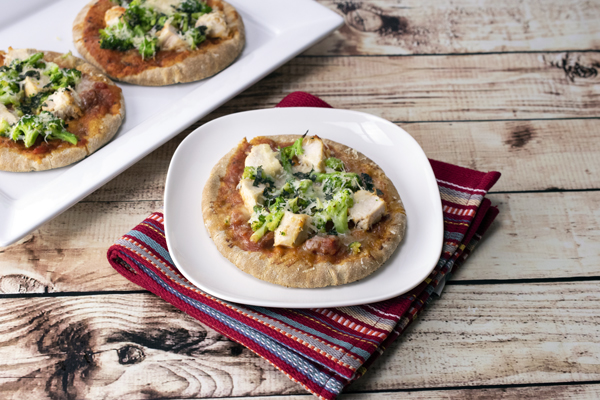As the leading cause of death among Americans, according to the Centers for Disease Control and Prevention, heart disease often results from uncontrolled high blood pressure, high cholesterol, diabetes, overweight and obesity. However, a heart-healthy eating plan can help lower or control these risk factors and put you and your family on a path toward better heart health.
With back-to-school season adding stress to already busy schedules, it’s important for families to make time for healthy eating decisions. Consider these five steps recommended by The Heart Truth program of the National Heart, Lung, and Blood Institute (NHLBI):
Eat Smart
One way to get started on a path toward heart-healthy eating is to change your way of thinking about how and what you eat. For example, use smaller plates to help limit portion sizes. Chew food slowly and consider the textures and flavors of different food as you eat.
Plan to Eat Heart Healthy
Put together an eating plan that offers a balance of calories and nutrients including vegetables, fruits, whole grains and low-fat or fat-free dairy. Consider make-at-home favorites like Heart-Healthy Pita Pizzas, which include grilled chicken as a better-for-you alternative to methods such as frying.
Choose Healthy Snacks
After a full day of learning or working, it’s tempting for children and adults to grab a quick snack that may not be healthy. Swap out sugary or salty snacks and instead enjoy lower-calorie after-school treats that fit into your daily eating plan. Try options like a cup of seedless grapes, small banana, cup of cherry tomatoes, handful of unsalted nuts or half cup of low-fat or fat-free yogurt.
Find Heart-Healthy Menus
How you eat day after day can make a difference in your heart health over time. Developed through research by NHLBI, the Dietary Approaches to Stop Hypertension (DASH) eating plan emphasizes vegetables, fruits, whole grains, fish, poultry, beans, nuts, low-fat dairy and healthy oils to help keep your blood pressure in a healthy range. DASH focuses on lowering sodium and limiting foods that are high in saturated fat, including fatty meats, full-fat dairy and tropical oils.
Stay On Track When Dining Out
It is possible to eat healthy foods in restaurants. To control portion sizes, try tactics like eating half your entree and taking leftovers home for another meal. Choose foods that are broiled, baked or roasted to limit calories. Ask for low-sodium menu options and request butter, gravy, sauces and salad dressings on the side or leave them off completely.
Visit hearttruth.gov to find more healthy eating inspiration and find DASH-friendly back-to-school recipes at healthyeating.nhlbi.nih.gov.
Watch video to see how to make this recipe!
Heart-Healthy Pita Pizzas
Prep time: 10 minutes
Cook time: 8 minutes
Servings: 4
- 4 whole-wheat pitas (6 1/2 inches each)
- 1 cup chunky tomato sauce
- 1 cup grilled boneless, skinless chicken breast, diced (about 2 small breasts)
- 1 cup broccoli, rinsed, chopped and cooked
- 2 tablespoons grated Parmesan cheese
- 1 tablespoon fresh basil, rinsed, dried and chopped (or 1 teaspoon dried)
- Preheat oven or toaster oven to 450 F.
- On each pita, spread 1/4 cup tomato sauce and top with 1/4 cup chicken, 1/4 cup broccoli, 1/2 tablespoon Parmesan cheese and 1/4 tablespoon chopped basil.
- Place pitas on nonstick baking sheet and bake 5-8 minutes until pitas are golden brown and chicken is heated through.

